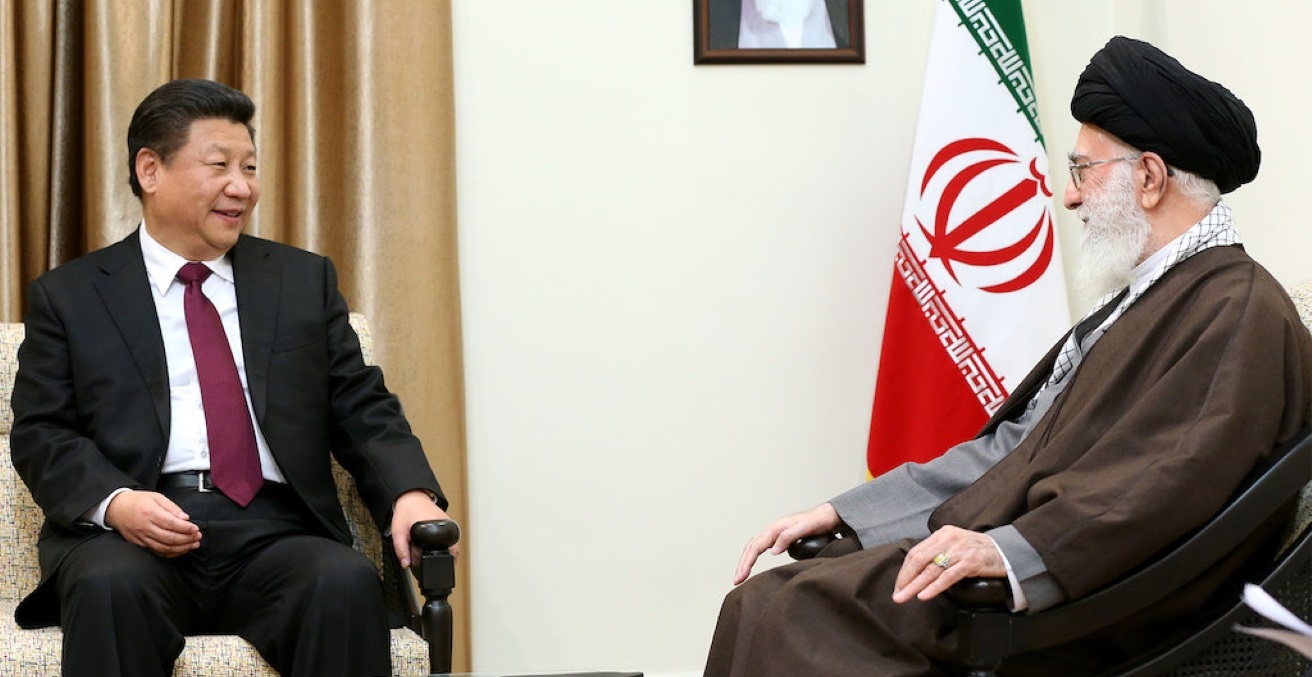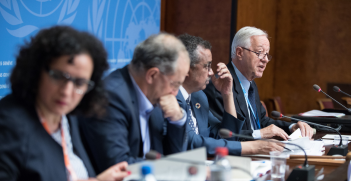The Iran-China Comprehensive Strategic Partnership: Winners and Losers

The Iran-China bilateral 25-year Comprehensive Strategic Partnership was signed in Tehran by foreign ministers Javad Zarif and Wang Yi on 27 March. The agreement highlights political, strategic, and economic winners and losers.
Both Iran and China are winners. The US is the primary loser, but other countries are adversely affected, especially potential investors and traders from Europe and other Asian states.
The agreement was initially proposed by Chinese president Xi Jinping during a visit to Tehran in 2016. However, there has been some speculation that the long gestation period was because Iran deferred final agreement until after the outcome of the US presidential elections was known. Whether true or not, it certainly impacts on US interests.
While specific details of the agreement are unknown, the joint statement released on signing refers to strengthening political and parliamentary ties, the recognition and pursuit of mutual strategic interests, increased cooperation in defense training, equipment, technology, and intelligence, increased cooperation in counterterrorism and counter-narcotics, and expanded economic ties, especially in finance, mining, energy, agriculture, and infrastructure. Infrastructure includes ports and railway networks and is linked to China’s Belt and Road Initiative (BRI).
Iran is a winner across several fronts. Politically, the agreement bolsters the legitimacy and status of the Iranian regime and rebuffs the campaign by the former Trump administration and regional supporters for “regime change.”
Strategically, the agreement identifies Iran as a state with legitimate strategic views, interests, and influence regionally. It describes Iran’s policies as playing a “constructive role” contributing particularly to peace and “sustainable stability.” The messaging is that other stakeholders need to more fully evaluate these factors when planning “inclusive workable solutions” to regional disputes. The US and NATO are currently addressing these challenges in respect of Afghanistan, and of Saudi Arabia and its Gulf allies in finding a solution to the Yemen crisis.
Nuclear references also have strategic implications. The agreement states it “contributes towards guaranteeing the peacefulness of Iran’s nuclear activities” and respects Iran’s rights to the “peaceful use of nuclear energy according to the Non-Proliferation Treaty (NPT)”. It adds that the Joint Comprehensive Plan of Action (JCPOA), of which China is a signatory, should be implemented in “good faith and in an inclusive and balanced manner.” In effect, the agreement reinforces both countries’ commitment to the JCPOA, and by implication, if the US rejoins the JCPOA, it must accept its existing scope and parameters.
These factors, coupled with Iran’s new military cooperation with China, have resulted in some lifting of the overall regional strategic gravitas of Iran. The military ties and JCPOA implications may also act as a de facto deterrent against possible hostile military activities against Iran by other countries, particularly potential preemptive military strikes against its nuclear facilities.
However, the economic lifeline offered is arguably Iran’s major benefit from the agreement. While the opportunities to resuscitate Iran’s economy are enormous, the specifics of the lifeline, and how it is implemented, particularly while Trump-era US sanctions remain in force, remain to be seen. Reporting last year identified potential Chinese economic investment during the life of the agreement at about US$400 billion, being $280 billion in Iran’s energy sector and $120 billion in transport, telecommunications, and manufacturing. Iran would offset the cost of this investment primarily through guaranteed oil exports to China at a discounted price.
For China, strategically, the agreement provides new political and military footholds in the Middle East region. Economically, while China already is, and will remain Iran’s largest trading partner, the opportunities for new investment are very significant. In particular, almost all European and other Asian competitors, including India, were knocked out of the running by Trump’s sanctions, and they will remain in limbo unless or until Biden lifts some or all those sanctions. That may be soon, but in the meantime, China will basically have first pick of the investment opportunities.
However, qualifications apply to both winners. Firstly, as significant as the agreement is to Iran, it will be careful not to put all its eggs in the one basket. Iran will not want to become uncomfortably dependent – politically, strategically, or economically – on China, or any other country. It will play the China card carefully, to advantage, but will not want to burn its options with Europe or the other Asian states.
Secondly, China will also be careful about the relationship. It has growing economic ties with the Gulf states and Israel and is seeking to expand these, along with its strategic presence. China will not want its relations with Iran to inhibit this broader outreach. China will also seek to carefully project itself as a constructive participant in Middle East developments, and potentially, as an additional intermediary-cum-mediator on Iran. It should be noted that last month Foreign Minister Yi visited four Gulf states (Saudi Arabia, the UAE, Oman, and Bahrain) and Turkey immediately prior to visiting Iran, and he no doubt gave assurances of the peaceful intent of the agreement and relations generally with Iran. No doubt similar messaging would have been sent to other regional states, especially Israel.
The US is the major loser. Trump’s withdrawal from the JCPOA and his “maximum pressure campaign” to precipitate regime change in Iran simply pushed Iran into closer relations with China and Russia, which directly conflicts with US interests. And even if Biden successfully renegotiates rejoining the JCPOA, inclusive of lifting Trump’s sanctions, the US is unlikely to benefit strategically. Given that Biden is now refocusing US priorities from the Middle East to Asia, Iran and China can be expected to at least partially benefit from the resultant regional readjustment to fill the void.
The Europeans and other Asian states will be disadvantaged because of China’s above advantage to exploit trade and investment opportunities. Just how significant that will be will depend on the needs, preferences, and financial competitiveness of their products versus those of China, and the extent to which Iran seeks to ensure market openings remain.
There are winners and losers in every comprehensive realignment of political, strategic, and economic interests, especially in the Middle East. This agreement brings short- and long-term challenges to a region already in a process of strategic change.
Ian Dudgeon is a presidential associate of the AIIA and former ACT Branch president.
This article is published under a Creative Commons License and may be republished with attribution.





